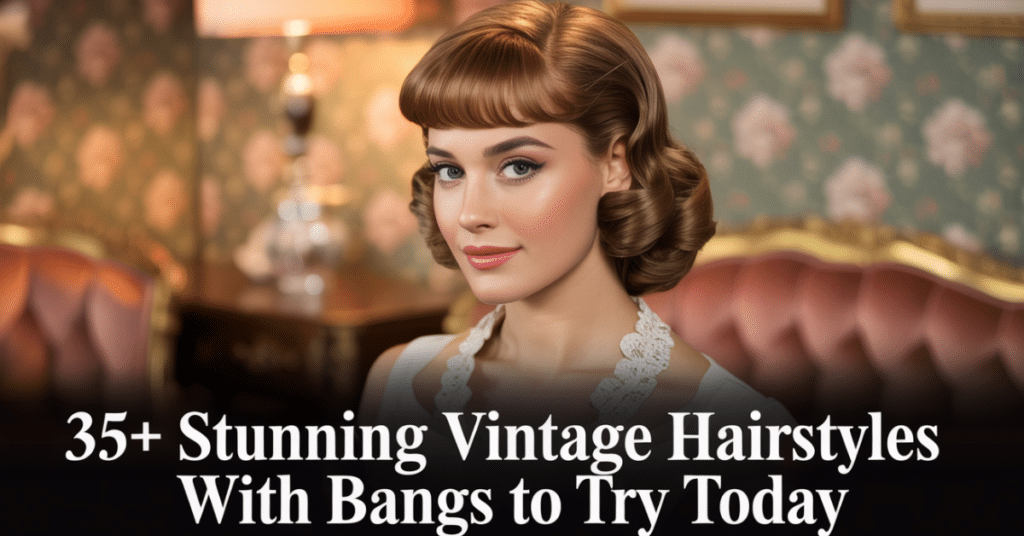Everything old becomes new again, especially when it comes to hair. Vintage hairstyles with bangs have made a serious comeback, and honestly? I’m here for it. These timeless looks aren’t just gorgeous they’re practically bursting with personality and charm that modern styles sometimes lack.
We’ve all been there… staring at our reflection, scissors in hand, contemplating if bangs are really the move. (Spoiler: they usually are!) But instead of going for the same old thing, why not take in spo from the decades that perfected the fringe game?
I’ve pulled together 35+ absolutely stunning vintage-inspired bang hairstyles that’ll transform your look without requiring a time machine. Whether your vibe is 1920s flapper chic or 1970s disco queen, there’s a fringe waiting with your name on it.
1. 1920s Flapper Bob with Micro Bangs
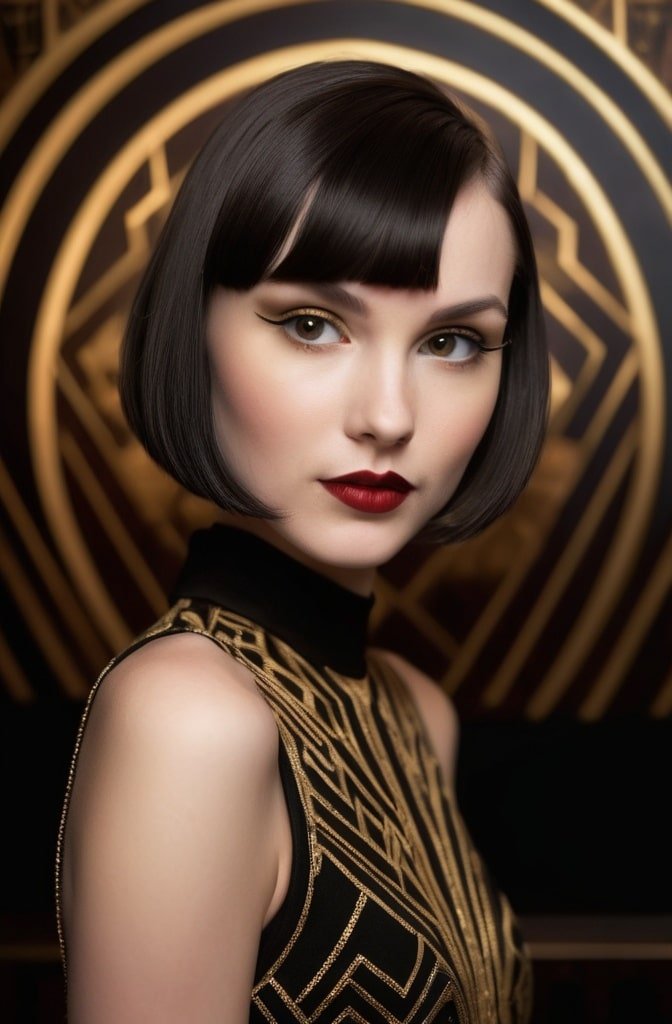
The Roaring Twenties gave us one of the most iconic hairstyles ever—the bob with those super-short micro bangs. This look was revolutionary back then, representing women’s liberation and modernism.
To rock this look today, ask your stylist for a blunt bob that hits just below your earlobes. The micro bangs should barely skim your forehead, creating that distinctive geometric shape that defined the era. Its perfect for oval and heart-shaped faces, and looks amazing with vintage-inspired makeup.
Don’t forget to style it sleek and straight—this ain’t the look for beachy waves! A little shine serum goes a longgg way here.
2. 1930s Hollywood Waves with Side-Swept Bangs
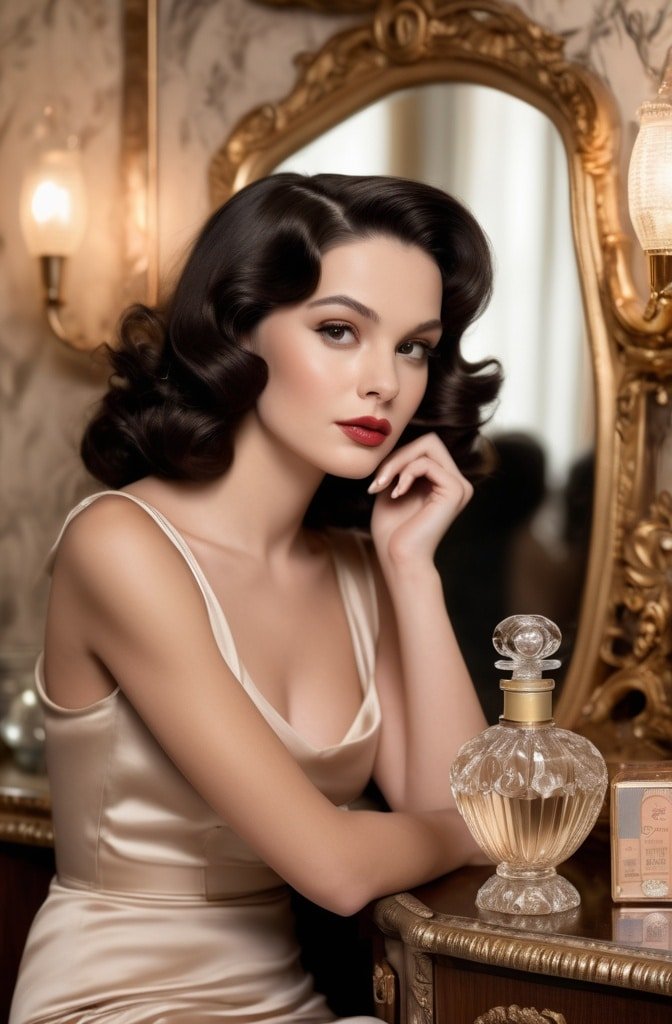
The 1930s brought us those glamorous Hollywood waves that still scream elegance even nearly a century later. Think Jean Harlow and Greta Garbo with their sophisticated side-swept bangs.
This style works absolute wonders on medium to long hair. The key is creating those deep, glossy S-shaped waves while sweeping your bangs dramatically to one side. The contrast between the structured waves and the softness of the side bangs creates that classic silver-screen mystique.
Pro tip: Set this style with hot rollers rather than a curling iron for more authentic results. And don’t be stingy with the hairspray—these waves need to hold!
3. 1940s Victory Rolls with Curtain Bangs
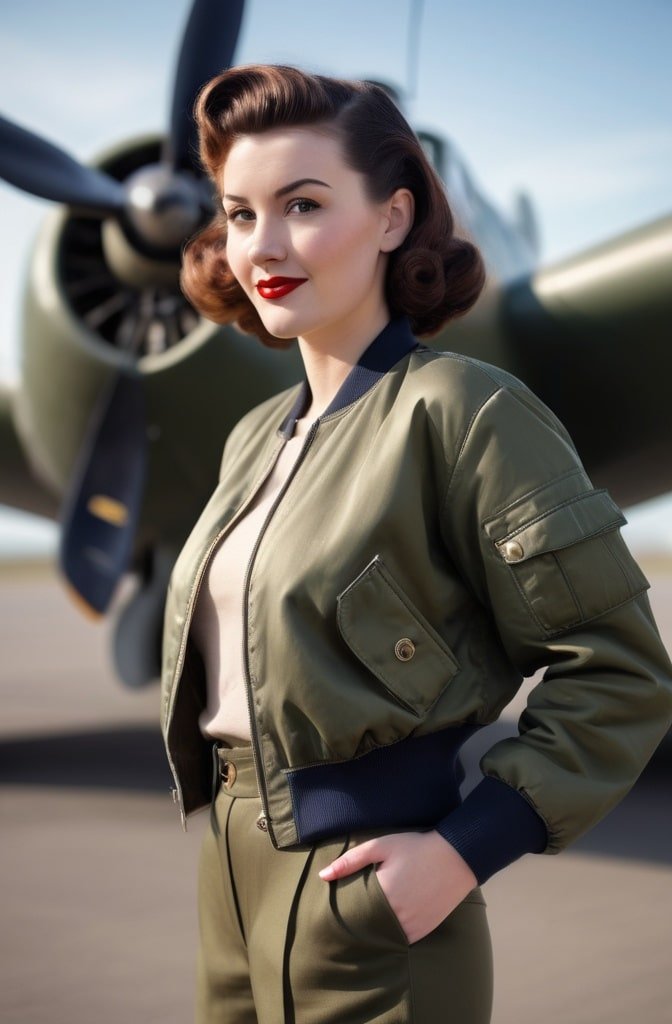
During WWII, women embraced practical yet feminine hairstyles, and victory rolls became the signature look of the decade. Pairing them with curtain bangs creates a wearable modern adaptation.
The beauty of this style is in its versatility—you can go full vintage with prominent rolls framing your face, or opt for a subtle nod with smaller rolls just at the crown. Your curtain bangs should frame your face delicately, parted in the middle and sweeping outward. It’s easier then it looks, I swear!
This style works amazingly for special occasions but can be simplified for everyday wear. Just remember to tease the roots for that authentic 40s volume!
4. 1950s Rockabilly Bangs with Bandana
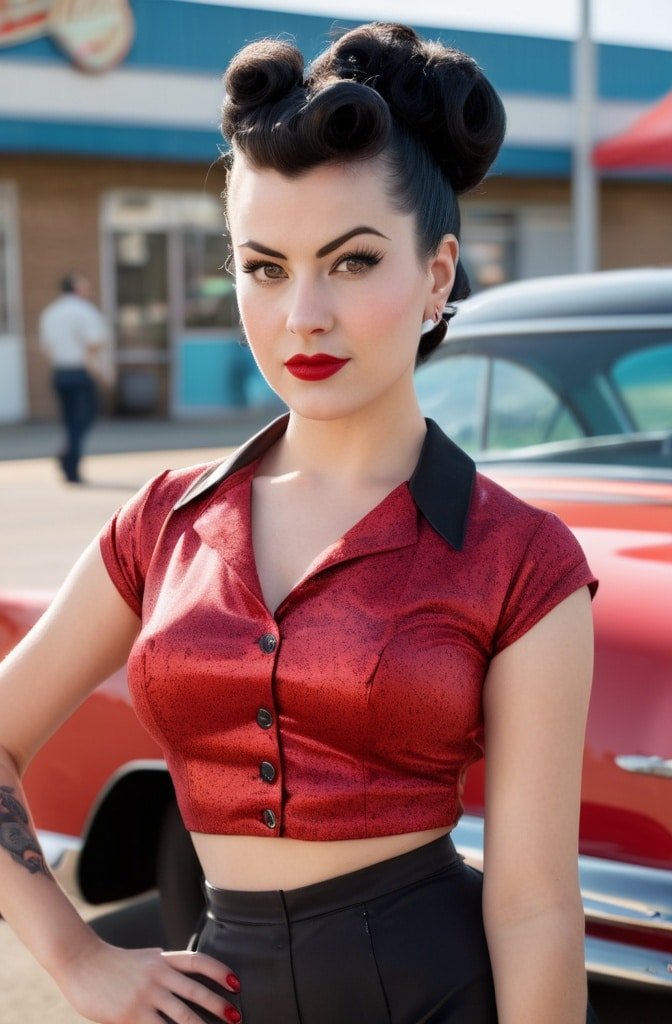
The 1950s rockabilly look combines retro sass with modern attitude. These full, rounded bangs paired with a colorful bandana create an instantly recognizable silhouette.
To achieve this look, you’ll need thick, blunt-cut bangs that curve slightly at the edges to frame your eyes. The rest of your hair can be worn in a high ponytail or victory rolls. Add a vibrant bandana tied at the top of your head, creating that classic pin-up shape we all love.
This style is perfect for anyone with a rebel heart—it’s playful, bold, and makes a statement without trying too hard. It also great for second-day hair, so win-win!
5. Audrey Hepburn Micro Bangs

Audrey’s iconic micro bangs from the late 50s remain one of the most copied vintage looks of all time. And for good reason—they’re delicate, feminine, and frame the face beautifully.
These ultra-short, wispy bangs should hit about an inch above your eyebrows. Keep them textured rather than blunt for that soft, pixie-like quality that made Audrey’s look so distinctive. Pair with an updo or a pixie cut to really channel her timeless elegance.
This style works best for those with finer hair and smaller foreheads. If you’ve got a widow’s peak, this might be a bit tricky to maintain, just sayin’.
6. 1950s Betty Page Bangs
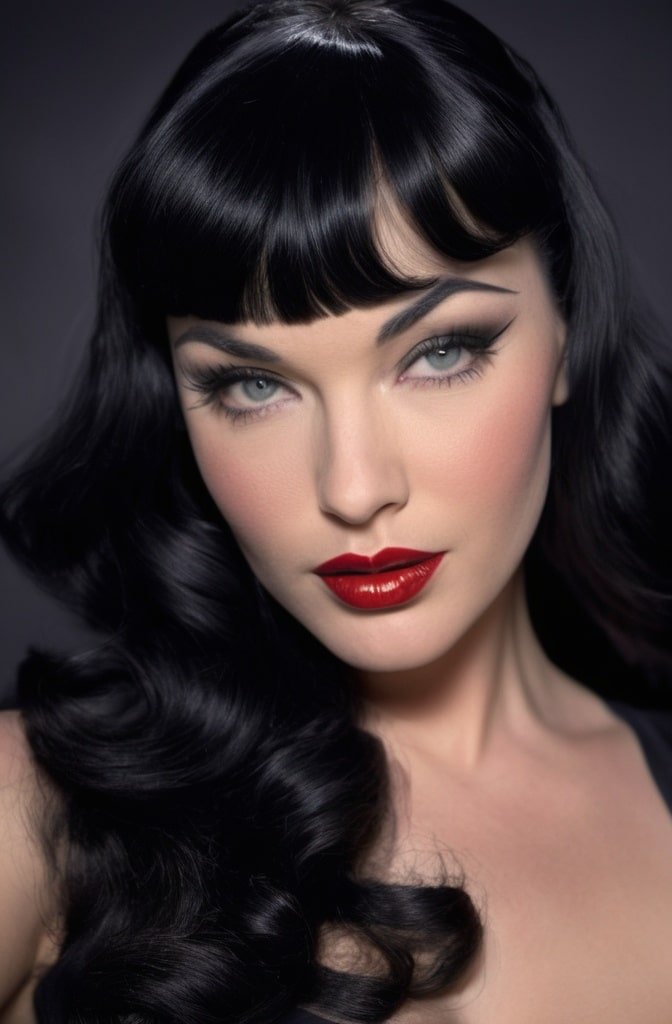
Nobody did dramatic bangs like Bettie Page. Her thick, blunt fringe with those rounded edges became the signature look for pinup models everywhere and still packs a punch today.
These statement bangs should be cut straight across, hitting just above your eyebrows, with the edges slightly curved downward. They work particularly well with black hair (like Bettie’s) but can be adapted for any hair color.
Pair these bold bangs with loose waves or victory rolls for the full pinup effect. Just be prepared for the commitment—these bangs are definitely not the “wake up and go” type!
7. 1960s Brigitte Bardot Curtain Bangs
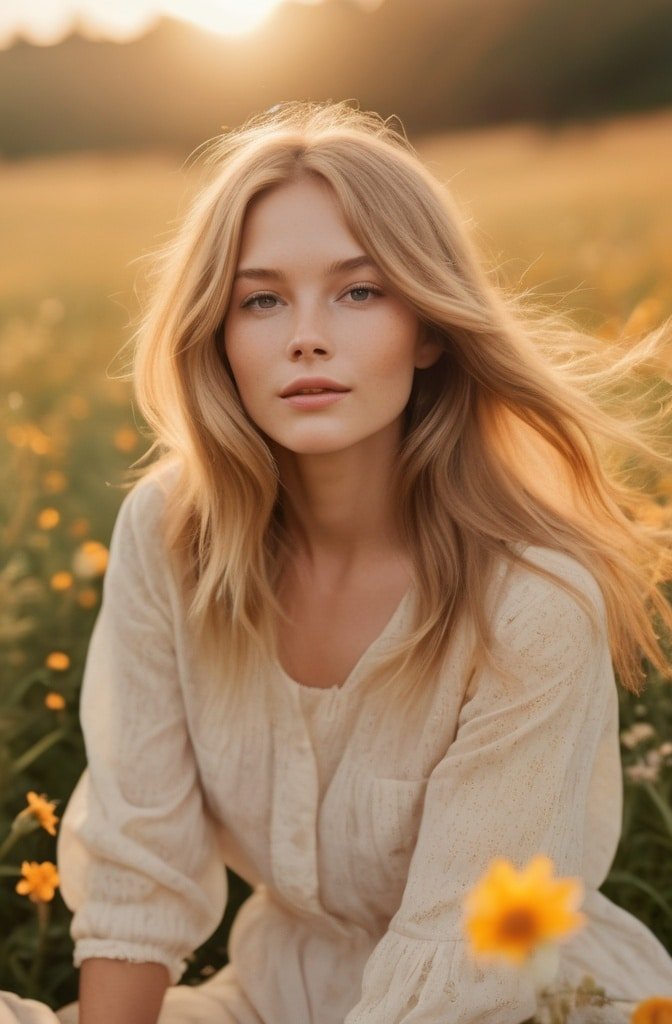
Bardot’s signature curtain bangs are possibly the most requested vintage-inspired look in salons even today. They’re flirty, flattering, and frame literally any face shape beautifully.
These aren’t your average curtain bangs. For the authentic Bardot look, they should be full and feathered, gradually blending into face-framing layers. Style them by blow-drying with a round brush, directing the bangs away from your face to create that effortless, just-rolled-out-of-bed French girl vibe.
The best part? They grow out gracefully, making them perfect for commitment-phobes who still want to try bangs. Just remember to get them trimmed every 3-4 weeks to maintain that perfect length.
8. 1960s Beehive with Short Bangs
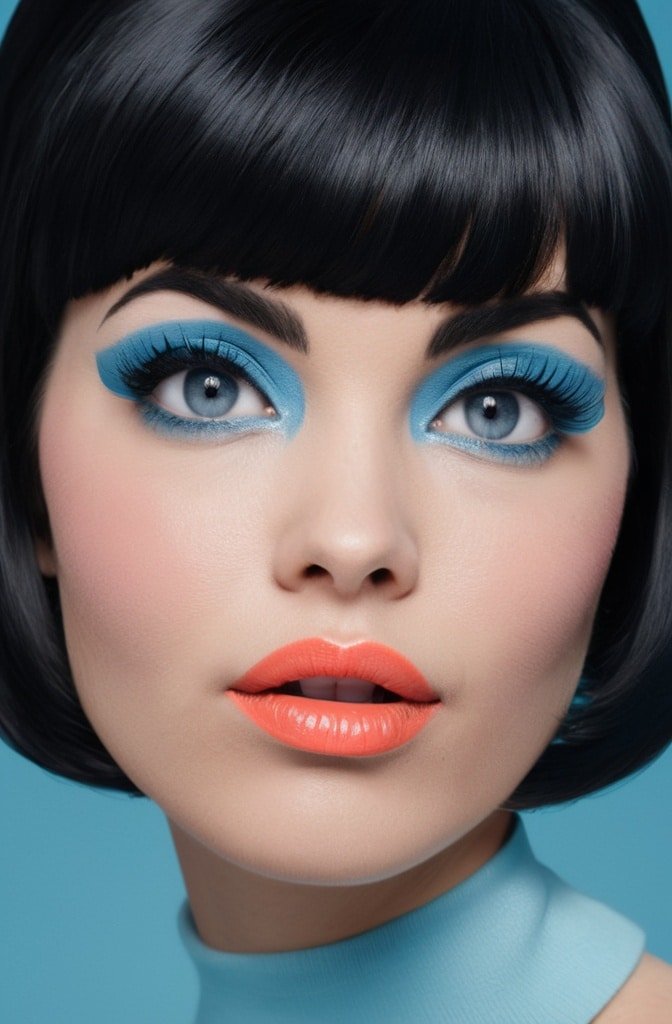
The beehive might seem intimidating, but paired with short, straight bangs, it becomes surprisingly wearable for modern life. Think Amy Winehouse, but with a more authentic 60s twist.
The contrast between the voluminous beehive and the sleek, short bangs creates a balanced look that elongates your face. Your bangs should be cut straight across, sitting about an inch above your eyebrows. The higher the beehive, the more drama you’ll create!
This look requires some serious backcombing and hairspray, so save it for special occasions when you wanna make heads turn. It’s not an everyday style unless your serious about your vintage aesthetic.
9. Mod 1960s Geometric Bangs

The mod era gave us some of the most distinctive haircuts ever, including those perfect geometric bangs worn by icons like Mary Quant and Twiggy.
These bangs are cut straight across, thick and heavy, often paired with an equally geometric bob. The key is precision—there’s nothing wispy or textured here. Everything should be sharp, sleek, and deliberate, just like mod fashion itself.
This style works best on straight hair and stronger facial features. If you’ve got the confidence to rock this bold look, it’s an instant attitude adjuster!
10. 1970s Jane Birkin Bangs
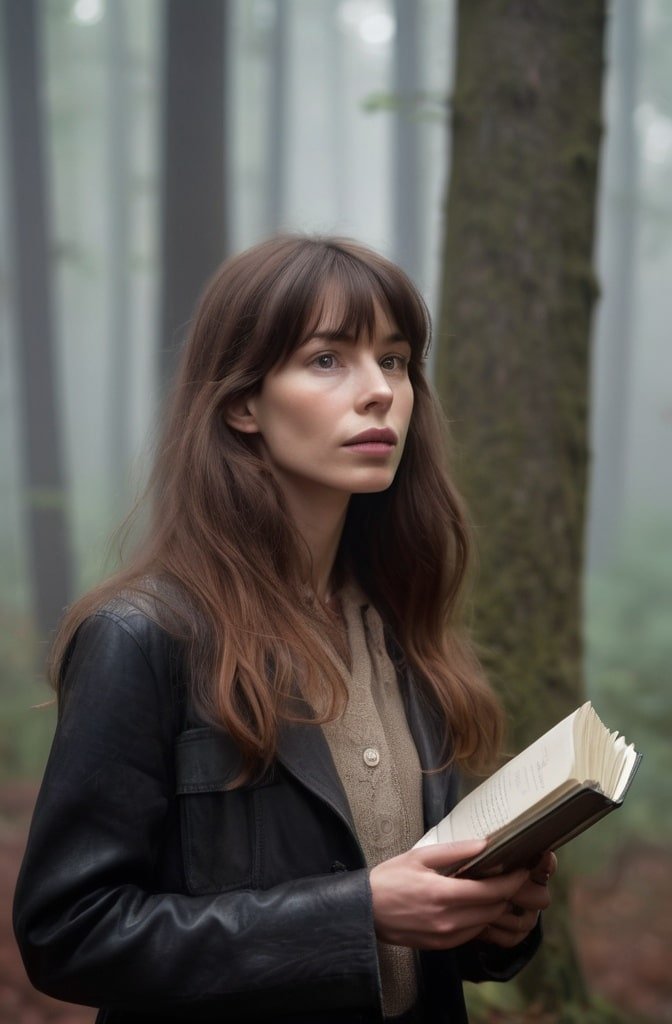
Nobody did effortless, French-girl bangs better than Jane Birkin in the 70s. Her slightly grown-out, imperfect fringe has become the blueprint for relaxed, cool-girl bangs.
These bangs should be cut straight across but worn slightly parted and textured, giving that “I trim these myself” vibe that somehow looks incredibly chic. They’re longer than most bangs, skimming the eyebrows or even covering them slightly.
Pair with long, slightly messy waves for the full Birkin effect. The beauty of this style is that it actually looks better when it’s not perfectly styled—perfect for lazy mornings!
11. 1970s Farrah Fawcett Feathered Bangs

Farrah’s feathered layers and swooping side bangs defined a generation and created one of the most requested hairstyles of all time. This look is all about movement and volume.
To achieve Farrah-worthy bangs, ask for long, side-swept bangs that blend seamlessly into face-framing layers. The key is in the styling—blow-dry with a large round brush, rolling away from your face to create that signature flip.
This style works especially well for those with square or round faces, as the sweeping motion of the bangs creates softness and dimension. Plus, it’s surprisingly flattering on most hair types!
12. Studio 54 Disco Bangs
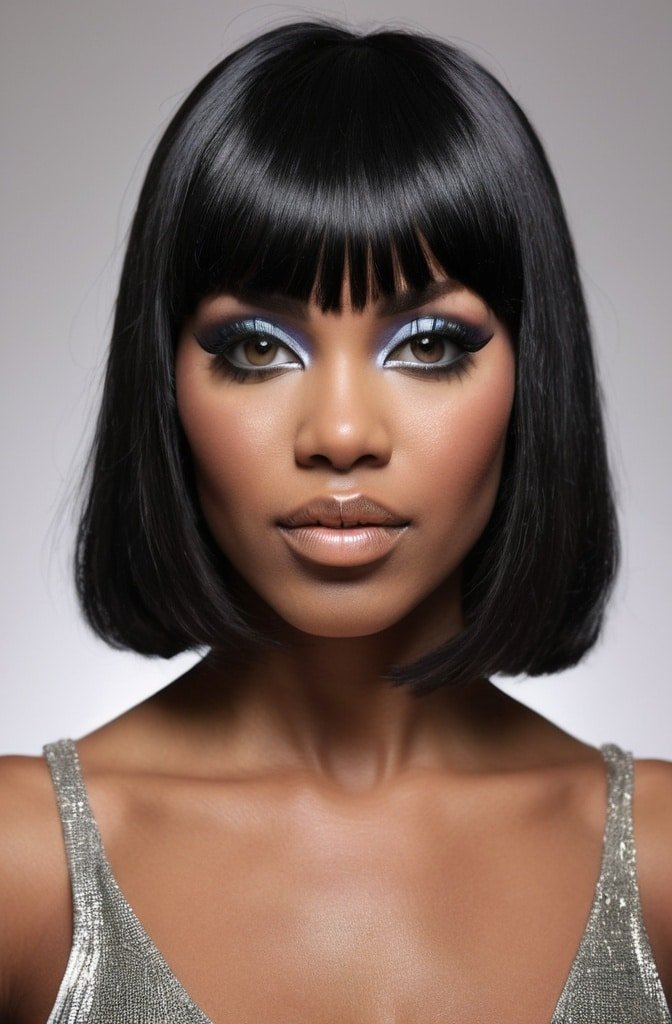
The late 70s disco era brought us wild volume and unapologetic glamour. These dramatic, center-parted curtain bangs were made for dancing under the mirror ball!
These bangs should be cut in a perfect arch, shortest in the center and gradually lengthening as they frame your face. Style them with a round brush, creating volume at the roots and a slight flip at the ends. Add lots of texture spray for that authentic disco texture.
Pair with big, voluminous curls for the full Studio 54 effect. This is not a subtle look—it’s meant to be noticed, just like everything else from the disco era.
13. 1940s Rosie the Riveter Bangs with Scarf

During WWII, practical yet feminine hairstyles became necessary for women working in factories. The rolled bangs paired with a colorful scarf became an iconic look that symbolized female strength.
To recreate this style, start with side-swept bangs long enough to roll. Create a deep side part, then roll your bangs upward and secure with bobby pins. Tie a colorful scarf around your head, leaving the roll visible.
This style is not just historically significant—it’s also incredibly practical for keeping hair out of your face while still looking put-together. Perfect for summer days or when you’re growing out your bangs!
14. 1950s Marilyn Monroe Curled Bangs
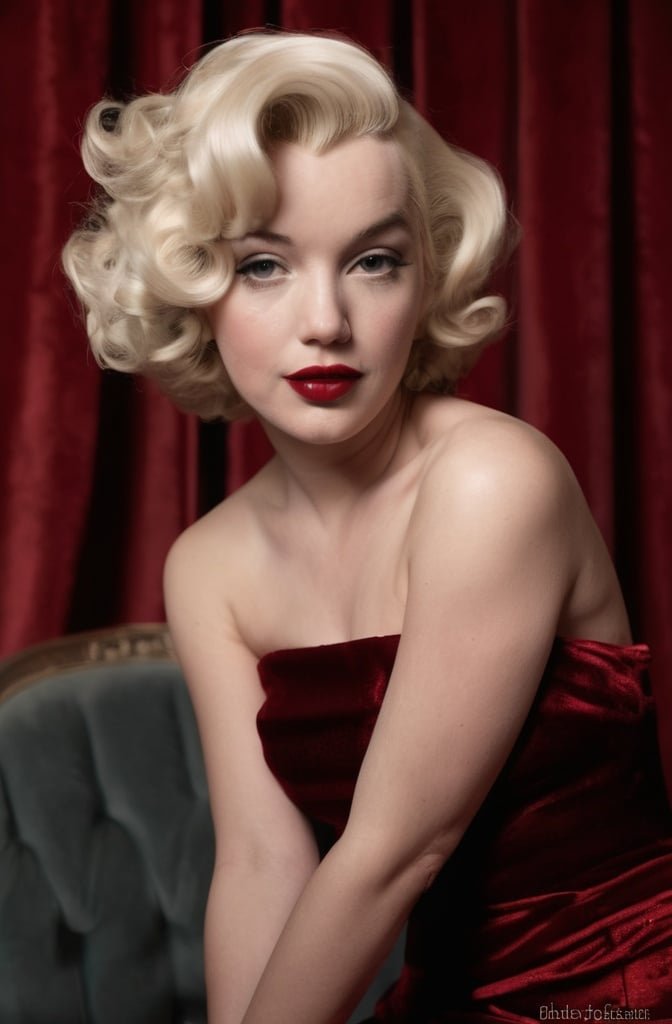
Marilyn’s soft, curled bangs complemented her famous platinum blonde locks and added to her bombshell image. They’re flirty, feminine, and surprisingly wearable today.
These bangs should be cut at eyebrow length, then styled into soft, loose curls that frame the forehead. A small barrel curling iron and some lightweight hairspray will give you that perfect Marilyn curl.
The beauty of this style is its versatility—it works with both updos and loose waves, making it adaptable for different occasions. Just remember that platinum maintenance is no joke if you’re going for the full Monroe!
15. 1930s Finger Waves with Baby Bangs

Finger waves defined the sophisticated style of the 1930s. Pairing them with extremely short “baby bangs” creates a dramatic, high-fashion look that’s making a comeback on modern runways.
These tiny bangs should be cut very short—about an inch in length—and can be worn straight across or slightly curved. The contrast between the structured finger waves and the minimal bangs creates a striking silhouette.
This is definitely an advanced style that might require professional help at first. It’s perfect for formal events when you want to make a bold vintage statement!
16. 1920s Louise Brooks Bob with Blunt Bangs
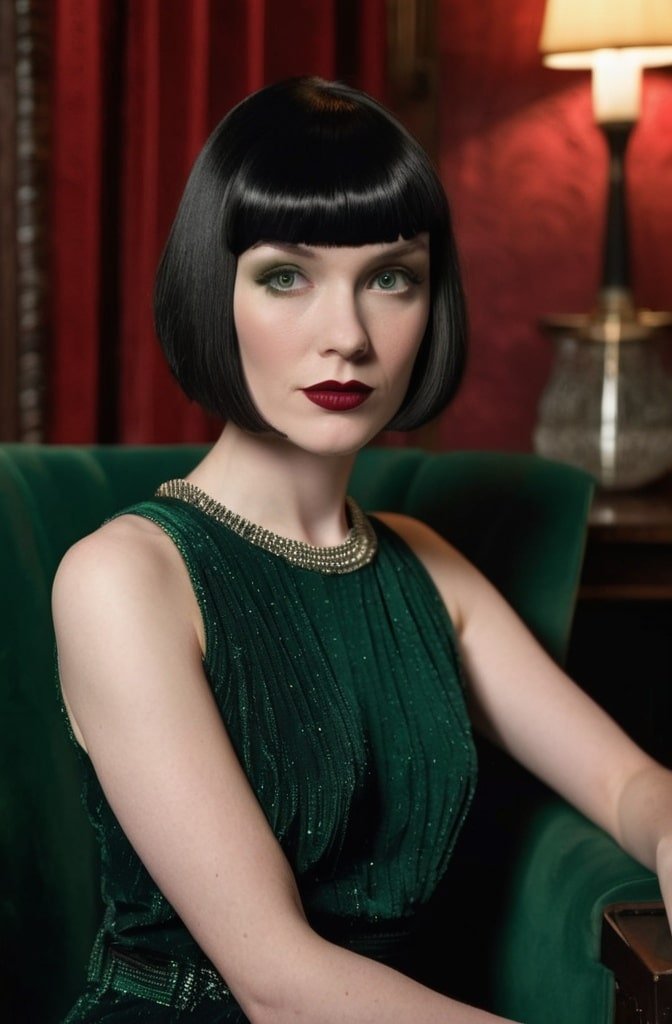
Louise Brooks’ iconic black bob with sharp, straight bangs defined the flapper era and continues to inspire modern interpretations. This look is all about geometric precision.
The bangs should be cut straight across, thick and heavy, hitting just above the eyebrows. The key is the sharpness—both the bangs and the bob should be cut with laser precision, creating that distinctive helmet-like shape.
This dramatic style works best on straight hair and strong facial features. It’s a look that says you mean business, while still being undeniably chic. Not for the faint-hearted!
17. Rockabilly Pin Curl Bangs
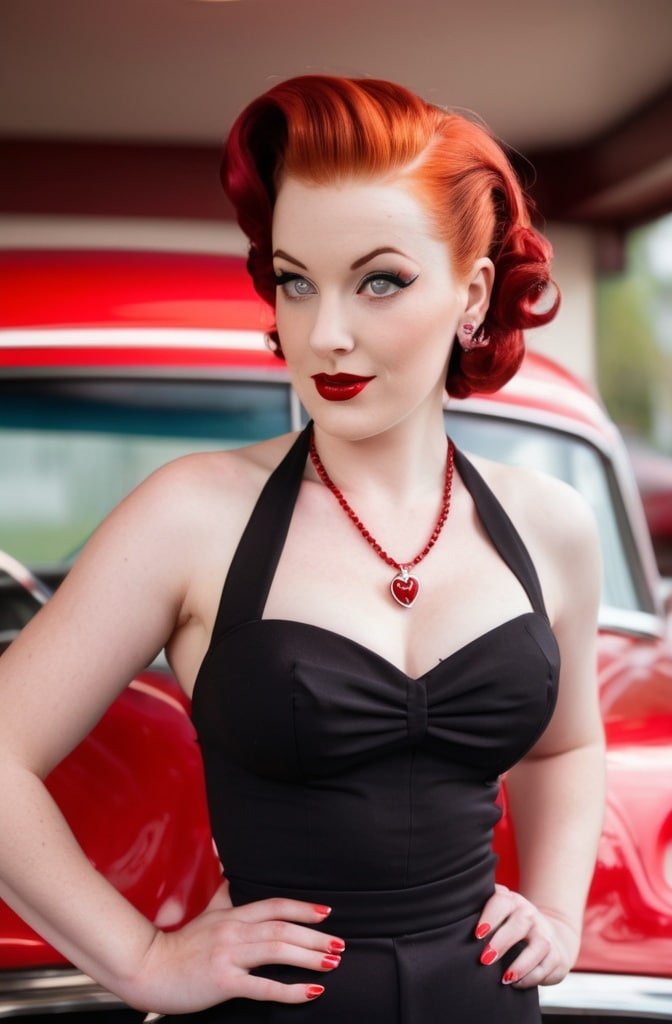
Pin curl bangs were a staple of the rockabilly scene, combining 1950s styling techniques with a rebellious edge. They add instant vintage flair to any hairstyle.
To create this look, section off your bangs and roll them into a large barrel curl away from your face. Secure with pin curl clips while setting, then gently brush out for that perfect vintage roll. A good setting spray is your BFF here.
This style pairs perfectly with bandanas, victory rolls, or high ponytails. It’s ideal for special occasions or vintage-themed events where you want to go all-out authentic.
18. 1960s Vidal Sassoon Five-Point Cut Bangs
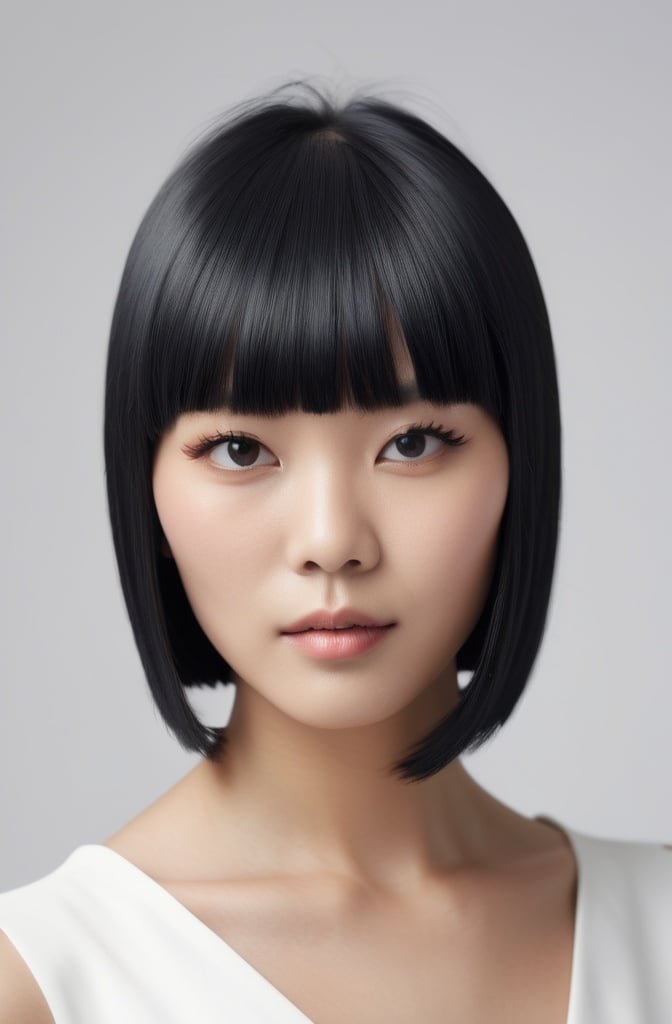
Vidal Sassoon revolutionized hairstyling in the 1960s with his architectural, geometric cuts. His five-point cut featured dramatic, asymmetrical bangs that made a bold statement.
These architectural bangs should be cut at an angle, often longer on one side than the other. The precision of the cut is everything—there’s no room for error in these dramatic lines.
This style works best on straight, smooth hair and requires regular trims to maintain its perfect shape. It’s not for everyone, but if you’re looking for a high-fashion vintage look, this is it!
19. 1970s Stevie Nicks Wispy Bangs

Stevie’s signature long, wispy bangs complemented her mystical aesthetic and wild curls. They’re romantic, bohemian, and perfect for those who want a softer approach to vintage style.
These bangs should be cut long and textured, blending seamlessly into layers around the face. They look best when slightly parted in the middle, framing the eyes in a flattering curtain effect.
The beauty of these bangs is their versatility—they work with both straight and curly hair, and can be styled in multiple ways. Perfect for the free spirits among us who don’t want to be tied down to one look!
20. 1950s Lucille Ball Poodle Bangs

Lucille Ball’s signature “poodle bangs” were a distinctive take on 1950s styling, featuring tightly curled bangs that added playful volume to her famous red hair.
To recreate this look, your bangs should be cut to eyebrow length, then set in small pincurls or with a tiny barrel curling iron. The result should be tight, bouncy curls that sit on the forehead rather than hanging down.
This playful style works particularly well for those with naturally curly hair. It’s whimsical, distinctive, and perfect for those who like their vintage style with a side of fun!
21. 1940s Lauren Bacall Side-Swept Waves
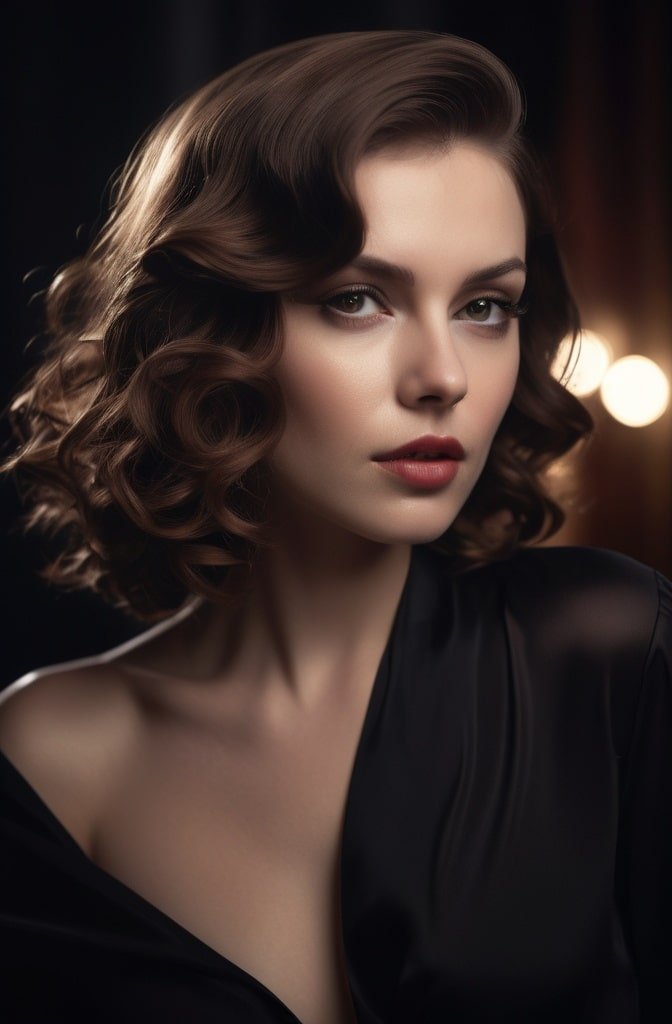
Lauren Bacall’s deep side part and dramatic swept bangs epitomized 1940s sophistication. This elegant look remains one of Hollywood’s most copied styles.
Your bangs should be cut long enough to sweep dramatically across your forehead, usually parting from one side. The key is creating that perfect S-wave that cascades over one eye—very film noir!
This style works best on medium to long hair and creates a universally flattering frame for any face shape. It’s sophisticated without being stuffy, and transitions beautifully from day to evening.
22. 1960s Jean Shrimpton Dolly Bird Bangs
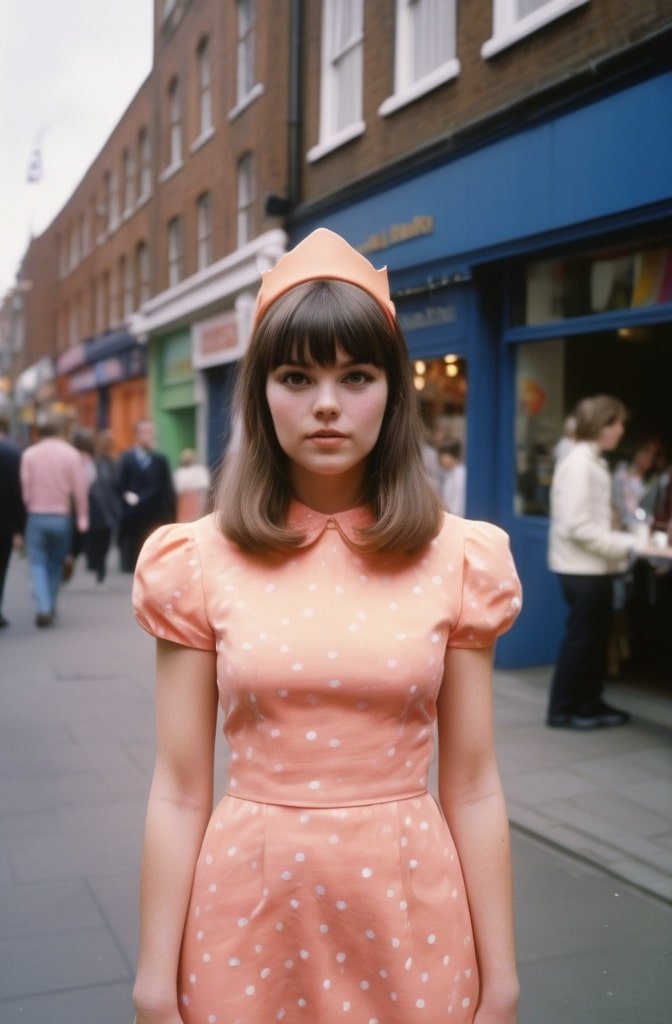
Jean Shrimpton’s doll-like bangs complemented her wide-eyed beauty and became a signature of the London “dolly bird” look. They’re sweet, youthful, and surprisingly flattering.
These bangs should be cut thick and full, hitting just below the eyebrows. The ends should be slightly textured rather than blunt, creating a softer frame for the eyes. Style them straight but with a slight bend at the ends for that authentic 60s feel.
This look pairs perfectly with winged eyeliner and a neutral lip for the ultimate mod aesthetic. It’s especially flattering for those with high foreheads or long faces.
23. 1950s Italian Film Star Side Bangs
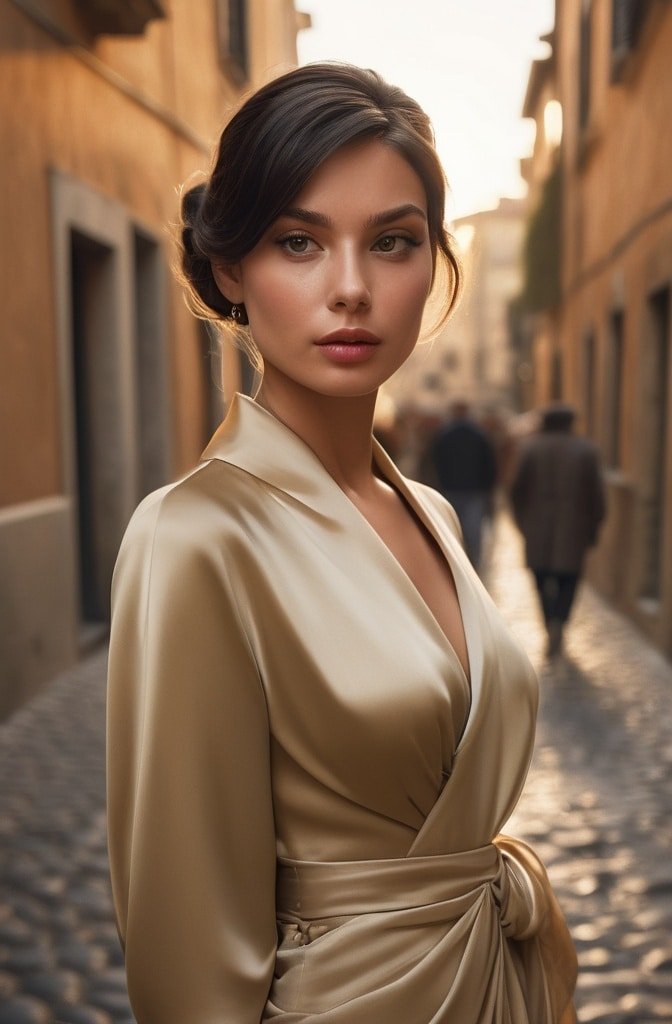
Italian cinema of the 1950s gave us those dramatic, side-swept bangs worn by stars like Sophia Loren and Gina Lollobrigida. They’re sultry, glamorous, and unapologetically feminine.
These bangs should be cut at an angle, starting shorter near the part and gradually lengthening as they sweep across the forehead. Style them with a round brush, creating a dramatic curve that frames one side of the face.
This Mediterranean-inspired look works beautifully with olive skin tones and dark hair, but can be adapted for any coloring. It’s perfect for those who want vintage glamour with a touch of European sophistication.
24. 1920s Clara Bow Heart-Shaped Bangs
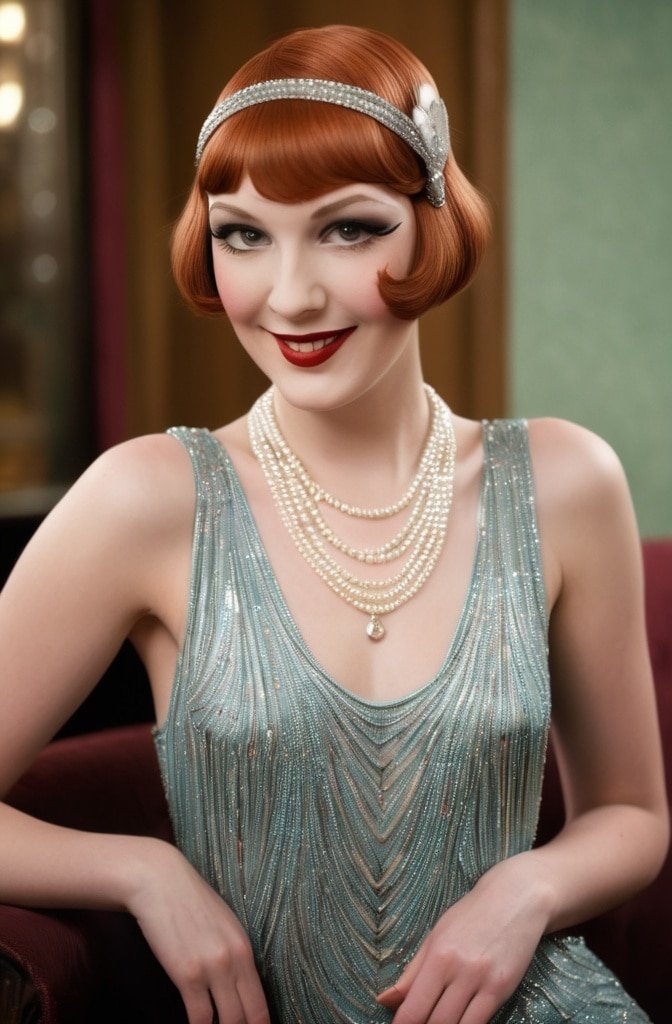
Clara Bow, the original “It Girl,” sported distinctive heart-shaped bangs that perfectly complemented her cupid’s bow lips. This whimsical style is making a comeback among vintage enthusiasts.
To achieve this unique look, your bangs should be cut into a subtle heart shape—slightly shorter in the center and gradually lengthening at the sides to frame the face. It takes a skilled stylist to get this shape just right!
This playful style works best with bob-length cuts and adds instant character to your look. It’s definitely a conversation starter and perfect for those who like their vintage style with a unique twist.
25. 1940s Betty Grable Rolled Bangs
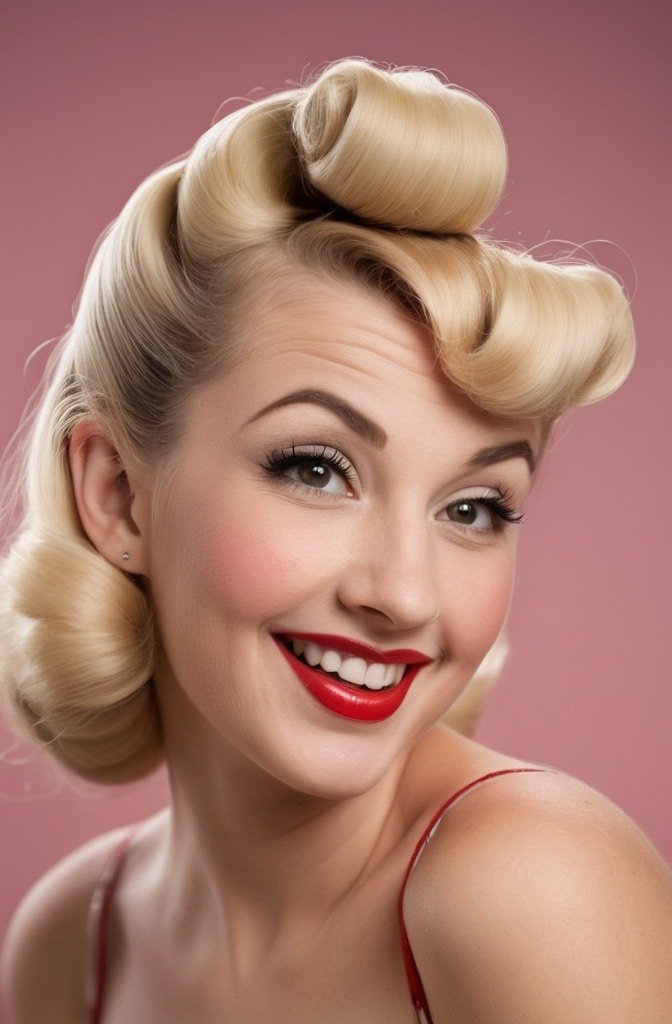
Betty Grable’s rolled bangs combined practicality with glamour, keeping hair off the face while maintaining a feminine silhouette. They’re the perfect vintage style for growing out bangs.
To create this look, your bangs need to be at least eyebrow-length. Use a round brush to roll them backward and upward, securing with setting spray or pins if needed. The resulting roll should sit high on the forehead, creating a flattering frame.
This versatile style works with various hair lengths and can be dressed up or down. It’s also a lifesaver for those awkward bang-growing stages when you need a stylish solution!
26. 1930s Joan Crawford Peaked Bangs
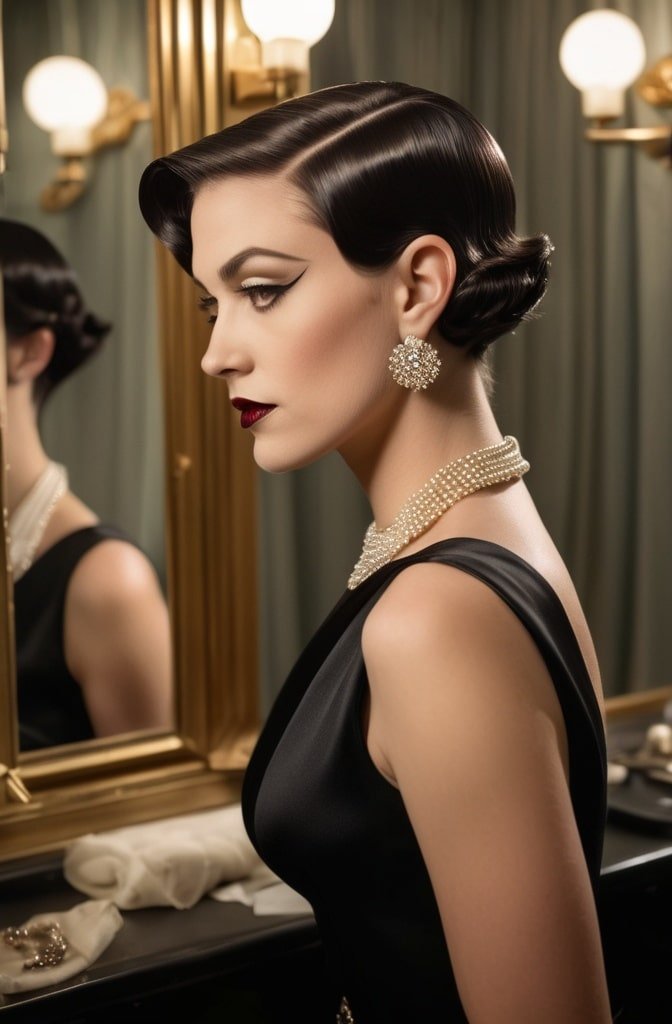
Joan Crawford’s distinctive peaked bangs were as dramatic as her personality. These architectural bangs create a striking frame that’s unmistakably vintage yet surprisingly wearable today.
The key to this look is creating a defined central point that rises above the rest of the fringe. Your stylist should cut the middle section of your bangs slightly longer, creating a subtle triangle or peak effect. Style them with a small round brush, directing the hair upward at the center.
This sophisticated style pairs beautifully with sculpted waves or a sleek bob. It’s particularly flattering for those with round faces, as the vertical emphasis creates the illusion of length. Talk about face-framing magic!
27. 1960s Nancy Sinatra “These Boots” Bangs
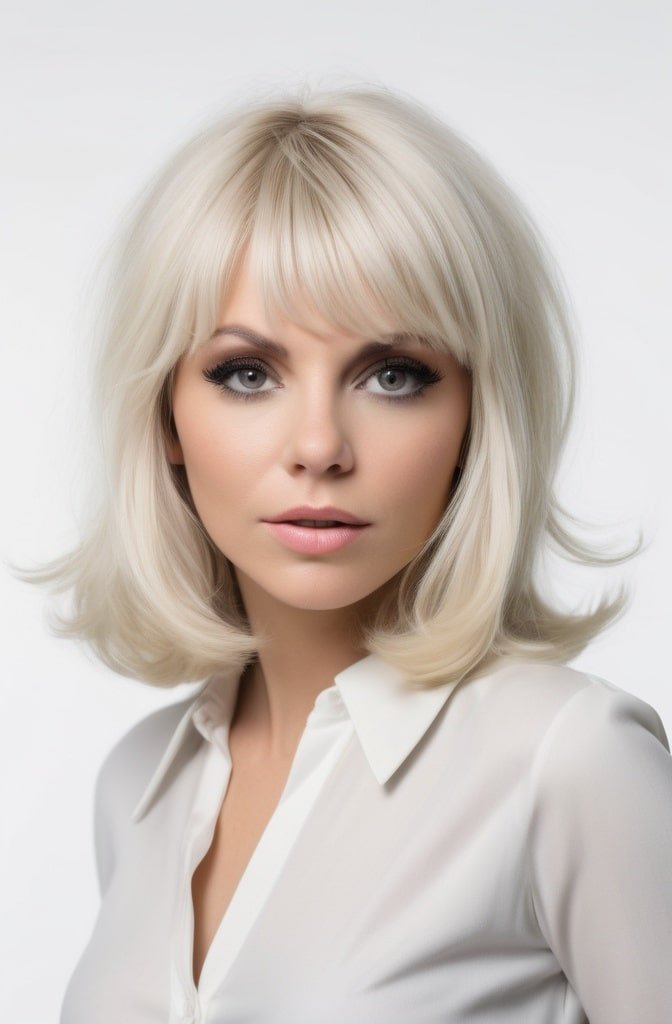
Nancy Sinatra’s signature fringe during her “These Boots Are Made for Walkin'” era combined fullness with movement in a uniquely 60s way. They’re flirty, fun, and instantly recognizable.
These statement bangs should be cut thick and full, hitting just below the eyebrows, with subtle layers throughout to create movement. The styling is crucial—blow-dry them with a medium round brush, creating a slight curve under at the ends but maintaining volume at the roots.
Pair with a teased crown and loose waves for authentic 60s glamour. These bangs work amazing on medium to thick hair and add instant attitude to any look. They’re defintely not for wallflowers!
28. Edwardian Gibson Girl Pompadour Bangs
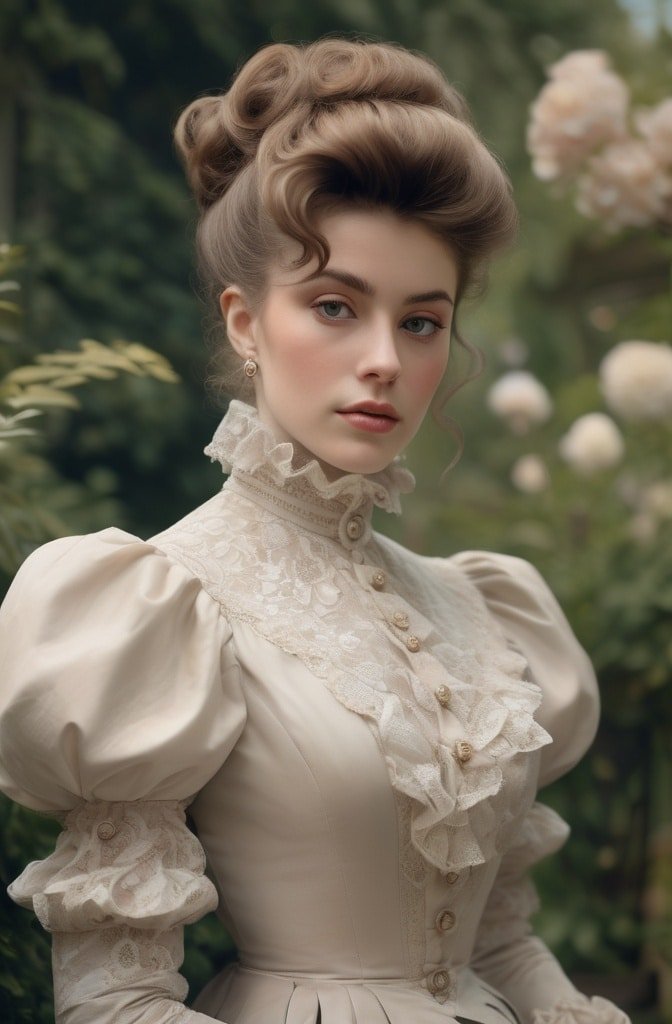
Before the 1920s bobbed revolution, the Gibson Girl aesthetic dominated with its romantic, soft upswept bangs that created a gentle pompadour effect at the hairline.
To recreate this dreamy Edwardian look, your fringe should be cut long enough to sweep back (at least eyebrow-length). The technique is in the styling—back-comb the roots of your bangs gently, then smooth the surface and roll them backward, creating that distinctive soft pompadour at the front.
This romantic style pairs beautifully with loosely pinned updos or long waves. It’s especially flattering for those with smaller foreheads, as it creates height and balance.
29. 1930s Josephine Baker Art Deco Bangs
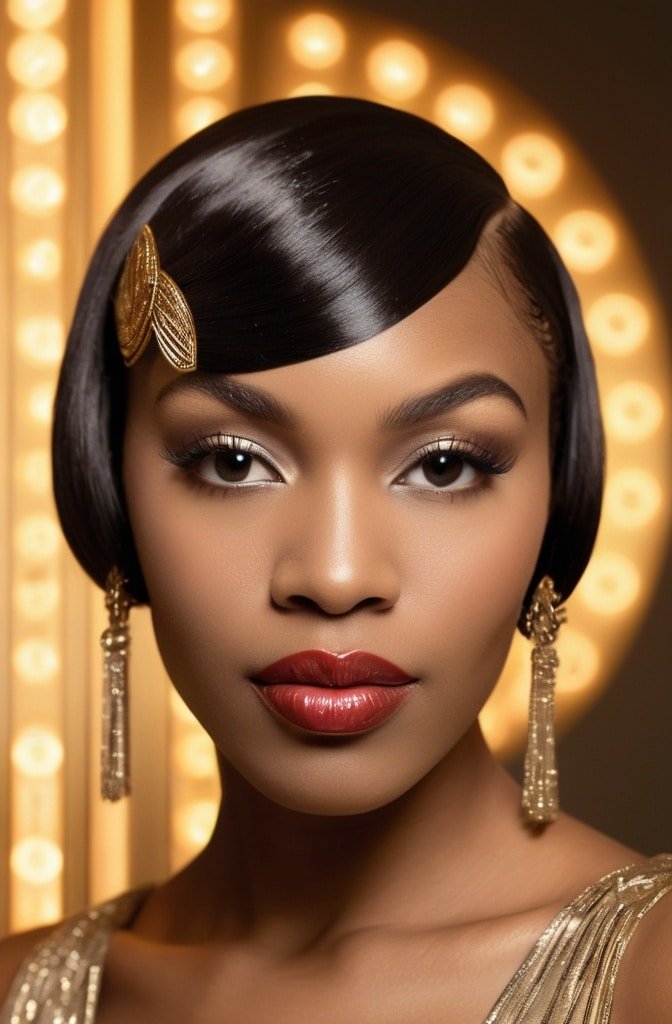
Josephine Baker’s sleek, sculpted bangs with geometric edges perfectly complemented the Art Deco aesthetic of her era. They’re bold, artistic, and make a serious statement.
These distinctive bangs should be cut short and straight across, then carefully shaped at the temples to create small points or curves that frame the face. The precision is everything here—each edge should be deliberately shaped like an Art Deco design element.
This dramatic style requires regular maintenance but creates an unforgettable silhouette. It works beautifully with darker hair where the shapes are more visible, and pairs perfectly with bold makeup for special occasions.
30. 1920s Colleen Moore Dutch Boy Bangs
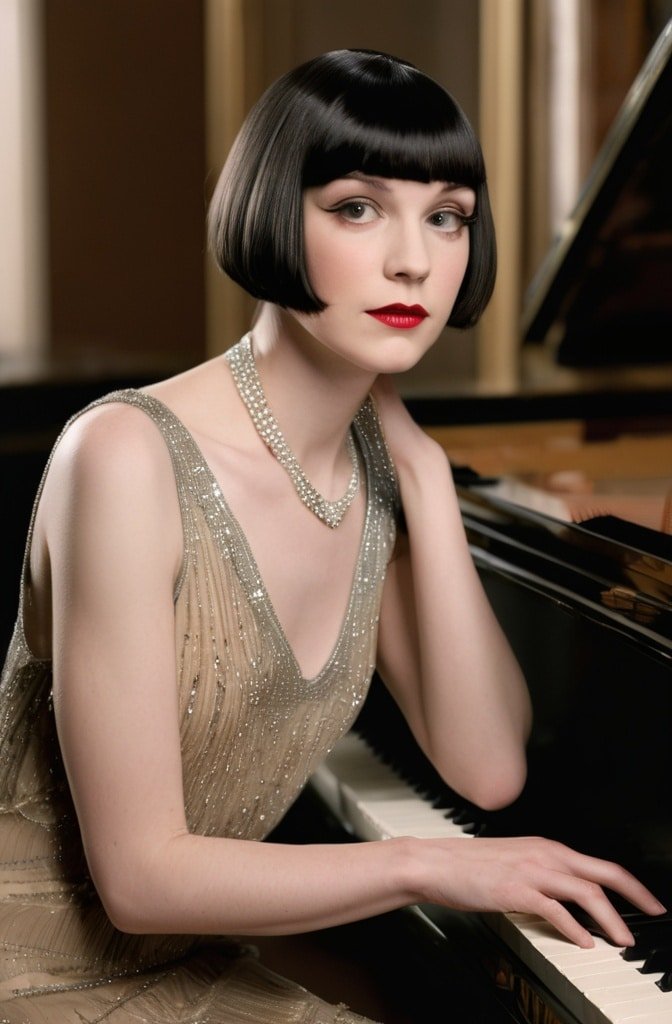
Silent film star Colleen Moore popularized the “Dutch Boy” bang—a straight-across, slightly rounded fringe that became a hallmark of the early flapper era before the sleeker styles took over.
These distinctive bangs should be cut thick and straight across, with slightly curved edges that cup the face. They should hit just at or slightly below the eyebrows, creating a youthful, doll-like frame for the eyes.
This charming style works particularly well with bob-length cuts and adds instant vintage character. It’s specially flattering for those with oval faces and delicate features.
31. 1940s Andrews Sisters Side Roll Bangs

The Andrews Sisters often wore their bangs in a distinctive side roll that combined practicality with wartime glamour. This adaptive style kept hair out of their faces while performing.
To achieve this look, your bangs need to be at least eyebrow-length. Create a deep side part, then roll your bangs outward and upward, securing with bobby pins and setting spray. The roll should be smooth and cylindrical, sitting along your hairline.
This versatile style works with various face shapes and hair textures. It’s particularly useful for those growing out bangs or dealing with humid weather when traditional bangs won’t cooperate!
32. 1930s Greta Garbo Mysterious Sweep
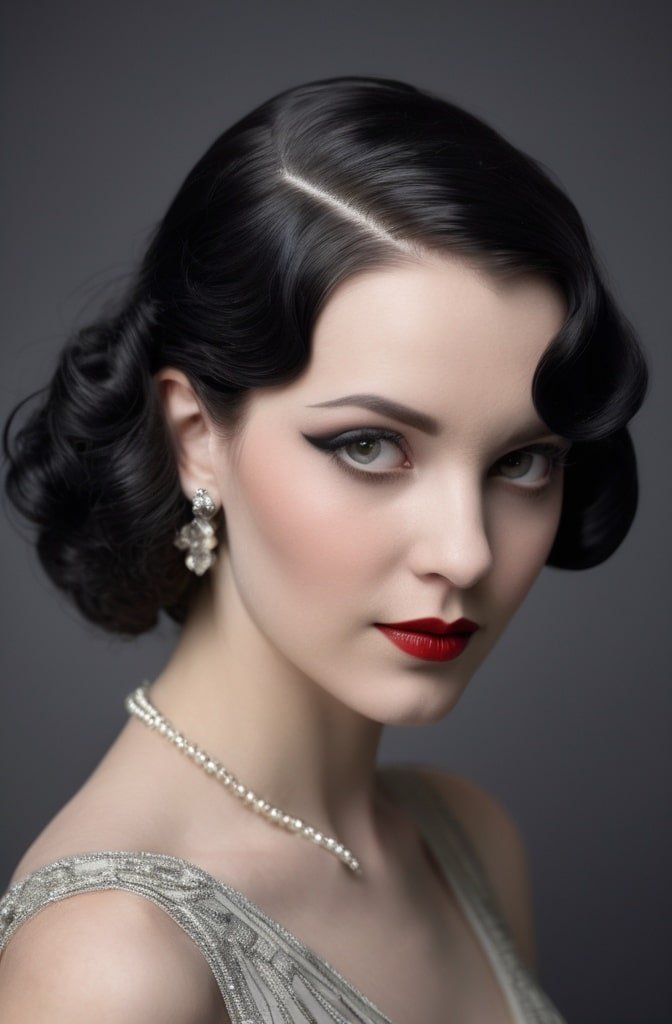
Garbo’s enigmatic appeal was enhanced by her signature bang style—a deep side part with a dramatic sweep that partially veiled one eye, creating her famous mysterious gaze.
These sophisticated bangs should be cut at an angle, longer on one side to allow for that dramatic sweep across the forehead. Style them with a medium round brush, creating a sleek curve that dips slightly over one eye.
This alluring style works best with medium to thick hair and oval or heart-shaped faces. It instantly adds old Hollywood drama to any look and transitions beautifully from day to evening.
33. 1970s Joni Mitchell Hippie Bangs

Joni’s distinctive center-parted, ultra-long bangs became synonymous with the folk music scene and bohemian style of the early 70s. They’re effortless, natural, and perfectly imperfect.
These free-spirited bangs should be cut to cheekbone length or longer, with wispy ends and a center part. The beauty is in their simplicity—they should look like they might have been trimmed at home (even if they weren’t!).
This low-maintenance style works beautifully with naturally straight or slightly wavy hair. They’re perfect for the minimalist who still wants a distinctive vintage vibe without much styling effort.
34. 1940s Carmen Miranda Upswept Bangs
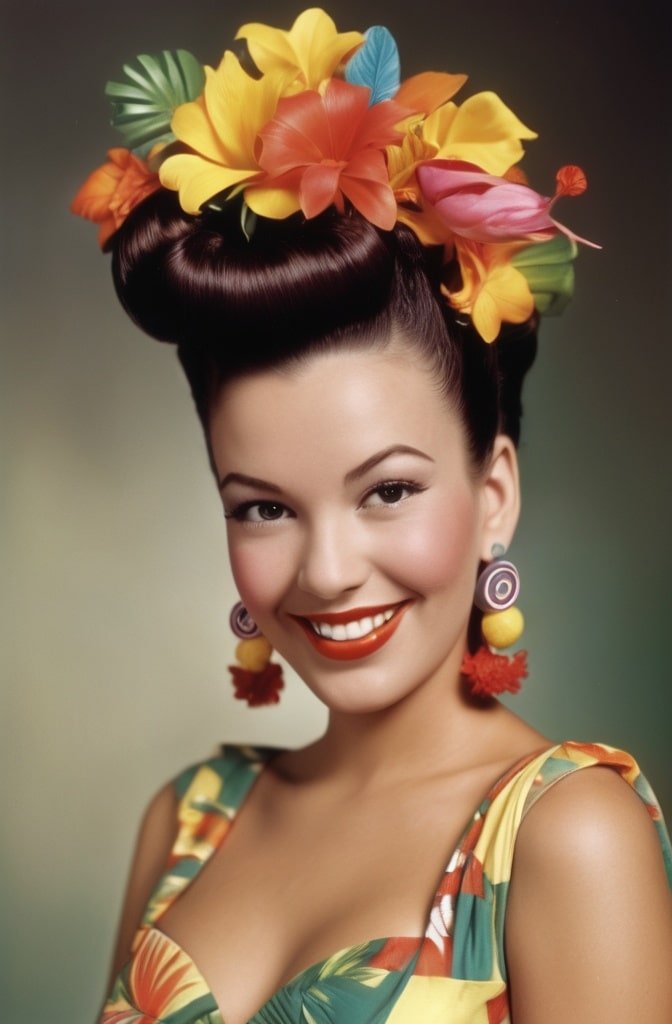
Carmen Miranda’s flamboyant style included her distinctive upswept bangs that created height and drama, perfectly complementing her famous fruit-laden headdresses.
These theatrical bangs should be cut at least eyebrow-length, then styled upward and backward, creating a sweeping arc away from the face. Heavy-duty styling products and pin curls help create this dramatic shape that defies gravity!
This showstopping style makes a statement for special occasions or costume events. It’s not an everyday look, but it’s perfect when you want to channel some serious vintage diva energy.
35. 1930s Myrna Loy Side-Parted Wavelets

Myrna Loy’s sophisticated bang style featured a deep side part with gentle finger waves across the forehead. It’s elegant, refined, and surprisingly wearable today.
These understated bangs should be cut at a slight angle, longer on one side to accommodate the deep side part. Style them using the finger waving technique to create gentle S-shaped waves that sit close to the forehead.
This polished look works beautifully for formal occasions and adds instant sophistication to any face shape. It’s particularly lovely on those with fine hair, as the waving technique adds structure and definition.
36. 1960s Sharon Tate Hippie Princess Bangs
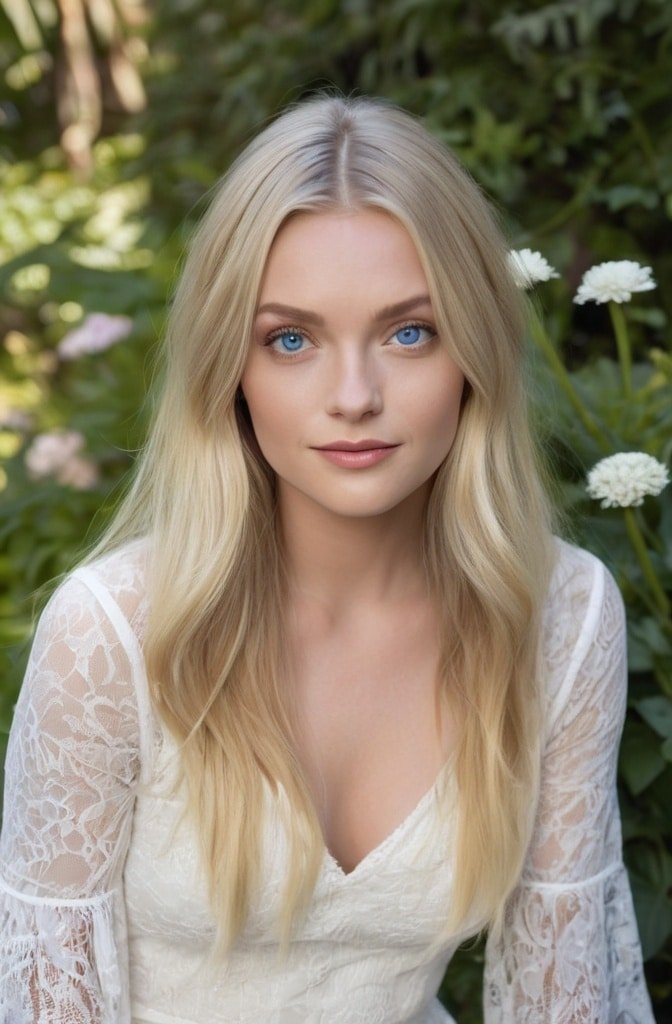
Sharon Tate’s signature fringe combined the precision of the mod era with the softness of the emerging hippie aesthetic. They’re feminine, flattering, and frame the eyes beautifully.
These ethereal bangs should be cut straight across but texturized at the ends to remove bulk and create movement. They should hit just at or slightly below the eyebrows, with the ends feathered to blend softly with the rest of the hair.
This versatile style works with both straight and wavy hair textures. It’s particularly flattering for those with wider foreheads, as the soft fullness creates balance and draws attention to the eyes.
37. 1950s Sophia Loren Italian Volume Bangs
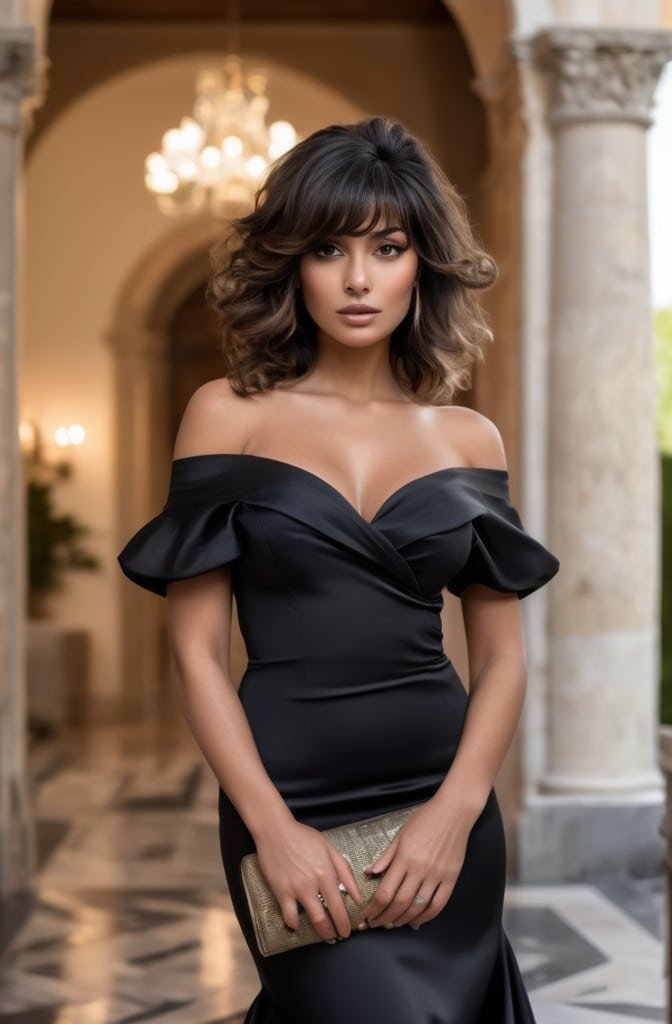
Sophia Loren often wore her bangs with dramatic volume at the roots, creating a sultry frame for her famous features. This Mediterranean-inspired style is all about height and movement.
These glamorous bangs should be cut at an angle, slightly longer on the sides. The magic happens in the styling—blow-dry them with a large round brush, creating maximum volume at the roots while sweeping them to one side.
This bombshell look pairs perfectly with cat-eye liner and bold lips for authentic Italian film star glamour. It works especially well on thick hair that can hold a voluminous style throughout the day.
38. 1920s Josephine Baker Baby Bangs
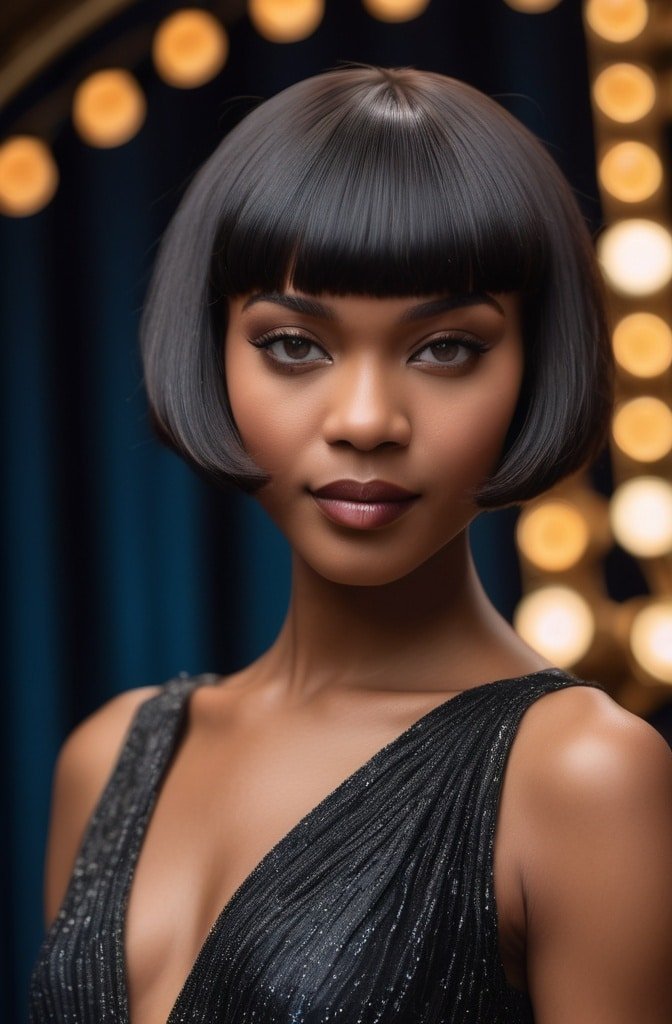
Before her more famous slicked styles, Josephine Baker sometimes wore ultra-short “baby bangs” that perfectly complemented her boyish bob and innovative dance style.
These daring micro-bangs should be cut extremely short—about an inch or so in length—and can be worn straight across or slightly curved. They should be texturized rather than blunt, creating a delicate frame that emphasizes the eyes and brows.
This bold style requires confidence but creates a striking, avant-garde look that’s both vintage and cutting-edge. It’s particularly striking on those with dramatic bone structure and expressive eyes.
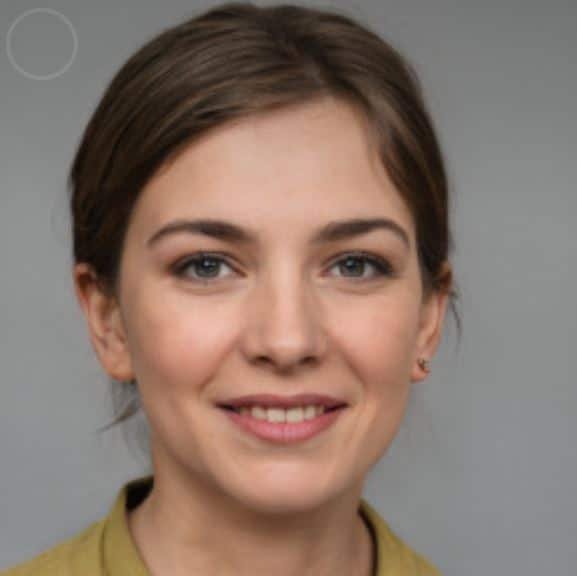
Tina Johnson | Fashion Mags Your ultimate style guide! Trendy tips, latest fashion news & inspiration to keep you chic & glamorous.

